Money Saving Maintenance

Who says nobody likes to talk about money? Here at This Old House, we live to swap tips that’ll save you cash. On home repairs that you can head off with a little preventive maintenance—or tackle yourself. On rising energy costs that have you layering on sweaters so that you can turn down the heat. On store purchases you need to make to keep the home fires burning. Do we love to pinch a penny? You bet. Hey, every little bit helps, as these tips attest.
1. Stop Drafts Around Drapes

You can save up to 10 percent on your heating bill just by closing the curtains at night. Up that number by nipping drafts around the edges: Install a cornice or hang drapery panels at the ceiling, letting them fall to the windowsill or floor. Seal outer edges to the wall and inside edges to each other with Velcro tape (about $8 for a 5-foot roll; Amazon). Or add insulated liners and treat them the same way (from $35 per pair; Sears).
The Payoff: Closing the drapes saves $125 a year; blocking drafts can boost savings for the average home to 25 percent, or $298.
2. Put a Shine on Lightbulbs

Dirty bulbs emit 30 percent less light than clean ones, according to the U.S. Department of Energy (DOE). If the room is dimmer, you might get the urge to turn on more fixtures. Instead, dust bulbs in lamps and other open fixtures regularly with a clean, dry cloth; just be sure to switch off the lights and let the bulbs cool thoroughly first, as heated bulbs can shatter.
The Payoff: Every additional LED lightbulb you don’t turn on for, say, 5 hours a day, saves about $3 a year. Don’t switch on seven extra light sources for that amount of time and save about $21 a year.
3. Make a Fridge More Efficient
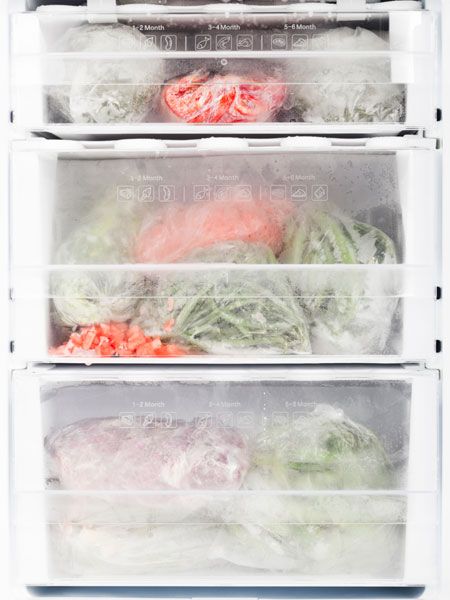
A fridge that runs too cold costs you money. A 5°F change could save 10 percent on electricity, worth about $15 a year. Put a thermometer inside overnight and adjust settings as needed to between 35°F and 38°F (the sweet spot for food safety). To prevent condensation, some fridges have a heater, which eats up 5 to 10 percent of the electricity they use. Look for an energy saver, power saver, or humidity control switch; if you find one, turn it off, unless (or until) you see water beads on the door seals or exterior.
The Payoff: Do both, and you’ll save about $30 a year.
4. Turn Off Lights
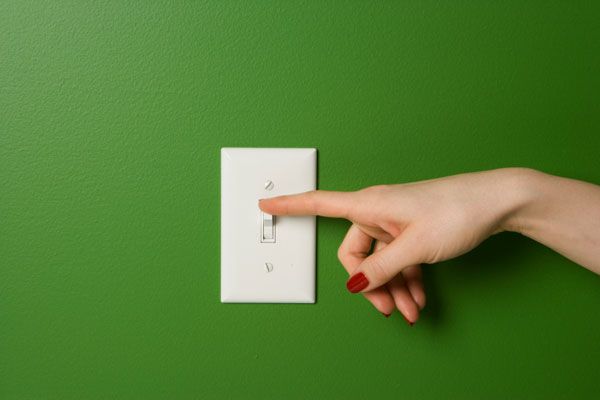
Sure, a 60-watt-equivalent LED lightbulb uses only $1.14 worth of electricity a year, according to the label. But that number is based on the bulb being on for just 3 hours a day at a rate of 11 cents per kilowatt-hour (kWh). In high-utility-cost areas, such as New England, where prices can be 17 cents per kWh, that same bulb costs $1.77 for 3 hours. Leave a light on for 15 hours a day at that rate, and the yearly tab zooms to $8.84 per bulb. If you leave on just 10 of the average home’s 85 lights for 15 hours a day, you’re talking $88.40 per year.
The Payoff: Turn off each of those 10 bulbs after 3 hours and, if you pay 17 cents per kWh, save about $70 a year.
5. Add Storms—Inside

Give original single-pane windows dual-pane efficiency while preserving their vintage look. Custom-fit acrylic panes from Indow simply press into place; silicone tubing around the edges creates an airtight seal.
The Payoff: A study by the DOE found that installing interior inserts led to an average 20 percent reduction in heating, ventilation, and air-conditioning for a typical savings of $166 a year.
6. Boost Fireplace Efficiency

Many dampers don’t close tightly when the fire’s out. A reusable inflatable plug, such as the Chimney Pillow Fireplace Draftstopper ($55-$110; Battic Door), seals when you need it to and deflates when you don’t.
The Payoff: A plug can cut the average home’s annual heating cost of $593 by up to 30 percent, or about $177 a year.
7. Replace an Old Ceiling Fan

Running ceiling fans clockwise in winter pushes heated air down, allowing you to turn down the thermostat by up to 5°F without feeling it. You can save 10 percent on heating bills, or $59 a year, that way. Save even more by replacing a decade-old fixture.
The Payoff: Bump up savings by an additional $15 a year with an Energy Star-rated fan for a total savings of about $75 a year. These fixtures are 60 percent more efficient than older models.
8. Fill a Bathtub Gap
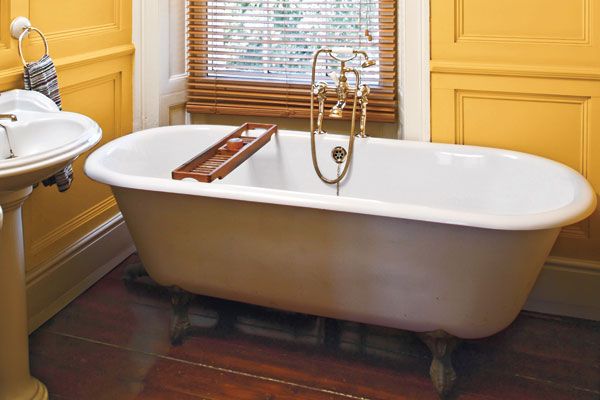
Got a tub over a crawl space or an unheated basement? Odds are, the plumber cut an outsized drain hole in the subfloor and left it open to the space below. Patch the hole with scrap plywood cut to fit around the pipes. For added insulation and fire protection, fill in any gaps with a fire-blocking foam, such as Dow’s Great Stuff Fireblock Insulating Foam Sealant ($5 for a 12-ounce can; Lowe’s).
The Payoff: You’ll save the same amount of energy you’d lose by leaving a window cracked open all day, every day, plus the $100 to $150 a plumber would charge to seal the hole.
9. Give Computers a Rest

Use the sleep mode so that the monitor dims after 10 minutes of idle time. You’ll save electricity while extending the life of your computer.
The Payoff: Using this feature will save you up to $90 a year in electricity. It’ll also help reduce greenhouse gases.
10. Nab Food Fast

Get in and get out. That’s the trick to cutting refrigerator energy costs. Opening the door for just a few seconds doesn’t hurt much, but beyond 30 seconds, the energy losses add up as warm, moist air flows in and makes the compressor work harder. Reduce the number of times you open your fridge—the average is 33 times a day!
The Payoff: Keep the door closed enough so that the fridge uses 10 percent less electricity and you’ll save $15 a year.
11. Add an Irrigation Meter
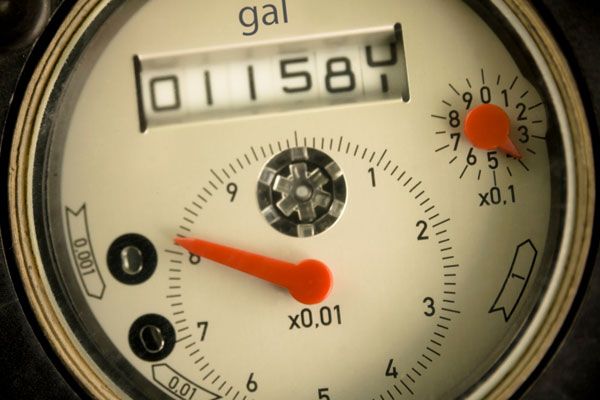
You probably pay sewer fees based on the amount of water you use, even if half of it winds up on the lawn instead of in a wastewater treatment plant. Ask your utility to install a separate meter for landscaping water (you’ll bear the cost) and you’ll pay sewer fees only for water used indoors.
The Payoff: The cost-benefit analysis will differ by community, but in Atlanta, avoiding sewer fees on half your water bill saves about $70 a month.
12. Change The Showerhead
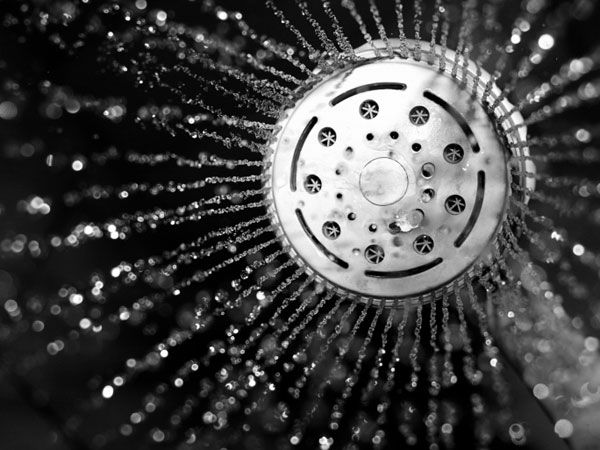
Old showerheads spew out as much as 5½gallons per minute (gpm), twice the federal limit and more than three times what a newer showerhead like the 1.5-gallon, ultra-low-flow Niagara Earth Massage (about $19; Overstock.com) delivers.
The Payoff: You could save $112 a year in hot-water costs.
13. Upgrade Faucet Aerators
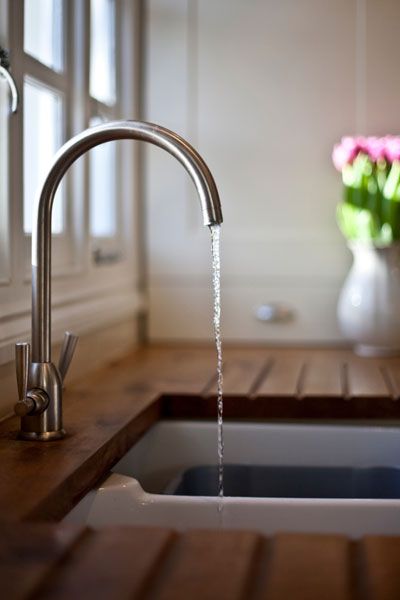
These reduce splashing by forcing water through a screen, which adds air and breaks the flow into rivulets. They also control the flow rate, so spending as little as 68 cents on a 1-gpm low-flow aerator buys you water and energy savings.
The Payoff: Pocket $100 a year if you have a gas water heater, $141 if it’s electric.
14. Come Spring, Plant Trees

Shade from even five-year-old deciduous trees planted on the east, west, and northwest sides of your house can help save up to 35 percent on yearly energy costs. In a hot spot like Sacramento, California, one mature tree could reduce the AC bill by as much as 40 percent.
The Payoff: Savings will vary, depending on where you live, but in Sacramento one mature tree can trim cooling costs by $440 a year.
15. Add Years to an Exterior Paint Job

Got a few chipped, flaking, or peeling spots? Areas where the paint is bubbled or faded? Remove loose paint with a scraper, and cover the area with primer and fresh paint. Repairs will look shinier at first but blend in as they weather.
The Payoff: An exterior paint job averages $3,108, or $444 a year if the job lasts seven years. Stretch it to 10 and you save $1,332.
16. Protect Pipes With a Hair Strainer

Placing this inexpensive plastic cover on your shower drain can help fend off clogs and the hassles that go with them.
The Payoff: You save the $226 a plumber charges for a typical house call.
17. Test Your Sump Pump’s Backup
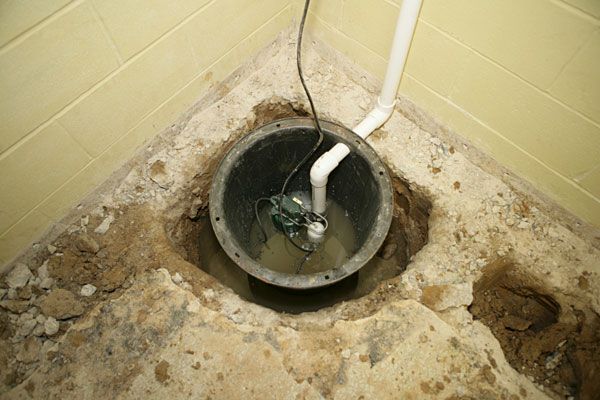
To check the battery, unplug the main pump and fill the pit with water. If the pump doesn’t switch on, replace the battery. Also be sure the main pump works when it’s plugged back in.
The Payoff: The $140 you spend for a new battery is a steal compared with $500 to pump out a flooded basement or $10,000 or more to replace floors and walls.
18. Deep-Clean Your Dryer
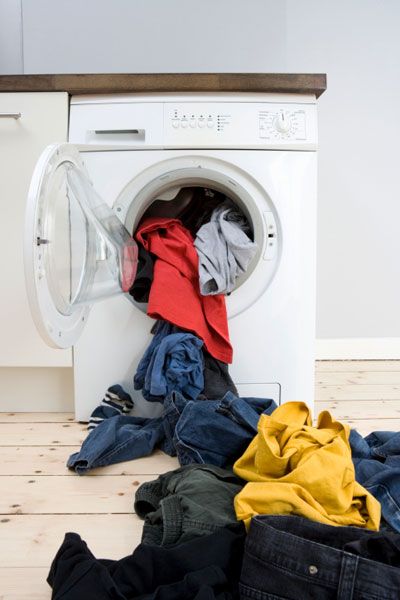
Dryer lint is a leading cause of 3,000 residential dryer fires and $35 million in property damage each year. But such fires are easy to avoid. First, remove lint from the screen after each use. Twice a year, grab a bendable dryer-vent brush ($10; The Container Store), run it down the inside of the lint trap, and then vacuum up any remaining lint and dirt. Finally, detach and vacuum out the dryer duct.
The Payoff: An inexpensive brush could save you $9,610, the average cost of damage from a dryer fire.
19. Swap in “No Burst” Stainless-Steel Washer Hoses
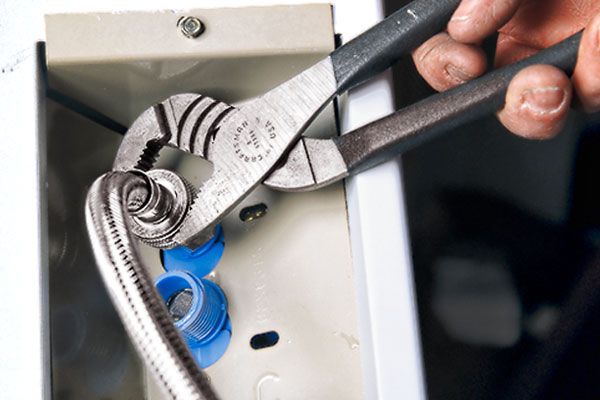
Replacing old rubber hoses can prevent a 500-gallon-per-hour tsunami if a hose ruptures. Buy ones long enough to allow for some slack, and right-angle connectors if needed. Check hoses for cracks and leaks every six months or replace as needed.
The Payoff: Your modest investment (72-inch hose, about $20; Ace Hardware) can save upwards of $15,000 to pump out and redo a flooded basement.
20. Put in Smart Sensors

Low-temperature and leak sensors send your smartphone an alert before pipes freeze and small leaks become major issues. Those from Wally (about $229 each; Wally) use existing wiring to gather data and send it back to an Internet-connected base station. Sensors should last 10 years without a battery change.
The Payoff: A 1-inch flood in a 2,000-square-foot home could cost you $20,920 in damage and property losses.
21. Coax a Balky Vacuum Cleaner Back to Life

Before ditching that $300 model, try fixing it yourself. It might be as simple as clearing obstructions in the hose or removing fibers wound around the beater bar. If it isn’t, check the manual for tips on replacing a fuse (about $3), a broken belt (about $3.50), a brush roll (about $20), or a filter ($5-$20). Lost the manual? Find it at Manuals Online.
The Payoff: Save yourself the cost of repair: $75 and up.
22. Track Any cracks on Basement Walls

Small fissures that have been there for years aren’t a worry, but ones that are growing are cause for concern. Keep an eye on them by placing masking tape across a crack, slicing through the tape right over it with a razor blade. If the split in the tape widens, call a structural engineer.
The Payoff: You might pay from $500 to $1,500 for a thorough evaluation. But the fix could be as simple as rerouting gutter water away from the house. Beats a major foundation repair, which would cost from $10,000 to $14,000.
23. Give the Front-Loader a Little TLC

The rubber door gasket on these washing machines can be a magnet for slime—and mold—since water can collect in its folds. Clean by wiping down the gasket and door glass with a microfiber cloth after each use and the detergent dispenser twice a month. Leaving the washer door ajar between loads can help head off the problem.
The Payoff: Prolong the life of the gasket and save $100 for a DIY replacement or about $300 for a parts-and-service call from a pro.
24. Dial Back on Furnace Filters
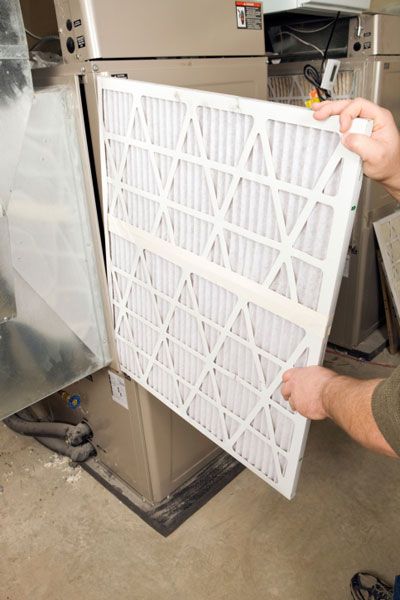
Superefficient filters trap more dust, pollen, and animal dander but they don’t necessarily result in cleaner air. That’s because these relatively large particles tend to settle before they even get to the filter. The Environmental Protection Agency recommends medium-efficiency filters with a MERV rating between 7 and 13.
The Payoff: Spend $7 for a filter with a MERV rating of 7 and save $780 over five years, if you change it monthly.
25. Skip Extended Warranties

Add-on warranties are a financial bonanza for stores but rarely make sense for you. Studies show that the average cost of repairs covered by warranties is only slightly higher than the cost of coverage.
The Payoff: Say “no thanks” and save $37 with small appliances, $65 to $75 with electronics, and $118 with major appliances.
26. Use Your Smartphone to Compare Prices

Mobile apps, such as RedLaser or ShopSavvy, read bar codes on items in stores and let you know if the products are available elsewhere for less. Find a better deal? Ask for a price match.
The Payoff: Savings will vary, but the RedLaser app recently helped one shopper use The Home Depot’s price-match policy to slash $220 off the cost of a new washing machine.
27. Take Advantage of Seasonal Sales

Many retailers discount storage products and organizing solutions in January, when New Year’s resolutions are on your mind. Smart shoppers can also take advantage of sales on furniture and carpeting this month. Websites such as freeshipping.org list what’s a good buy month-to-month.
The Payoff: Purchase the dream closet that normally costs $2,764 at Elfa now and save a tidy $830.
28. Find a Buy Nothing Group

It’s like Freecycle, but it works via Facebook. Buy Nothing groups let neighbors post things they want, wish to give away, or want to share, for free.
The Payoff: One user saved herself a $25 disposal fee by simply giving away a no-longer-needed couch.
